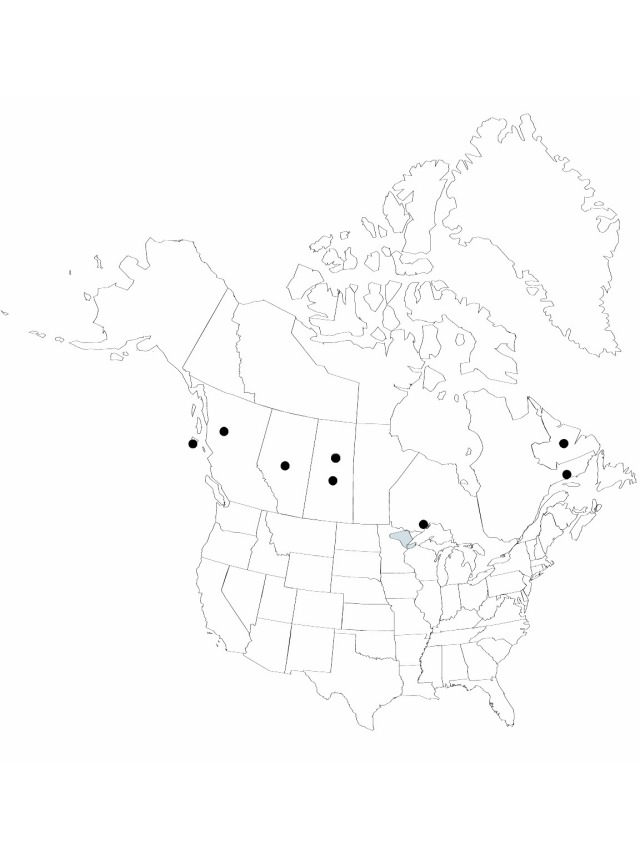Sparganium glomeratum
in C. J. Hartman et al.,Handb. Skand. Fl., ed. 12: 111. 1889.
Plants slender to robust, to 0.4 (–0.6) m; at least some leaves and inflorescences emergent, erect. Leaves stiff, weakly keeled, to 50 cm × 6 mm. Inflorescences: rachis unbranched, condensed, erect; bracts ascending, somewhat inflated near base; pistillate heads 2–6, mostly supra-axillary, sometimes opposite bract above, upper crowded, sessile, proximal head not contiguous with upperdistal, peduncled, 1.2–1.6 (–2) cm diam. and contiguous in fruit; staminate heads 1 (–2), contiguous or not with distalmost pistillate head. Flowers: tepals without subapical dark spot, entire to erose; stigma 1, lanceolate. Fruits greenish brown, lustrous, stipitate, fusiform, body not faceted, slightly constricted near equator, 3–6 × 2–3 mm, tapering to beak; beak straight, 1.5–2 mm; tepals attached at base, reaching 1/3 to 1/2 length of fruit. Seeds 1.2n = 30.
Phenology: Flowering summer (Jul–Aug).
Habitat: shallow, quiet, neutral, mesotrophic waters
Elevation: 0–1000 m
Distribution

Alta., B.C., Nfld. and Labr. (Labr.), Ont., Que., Sask., Minn., Wis., circumboreal
Discussion
Sparganium glomeratum is apparently rare, or perhaps is only rarely collected, in North America, except it is locally common in sedge-marshes and black-ash swamps near the western end of Lake Superior. The species is rather invariable throughout its circumboreal range (C. D. K. Cook and M. S. Nicholls 1986).
Selected References
None.
Lower Taxa
"elongating" is not a number.